25 位变革制造业的领导者
2021 年,智能制造开始询问制造业转型的领导者,冠状病毒大流行对其业务产生了哪些影响。这些故事不仅继续令人惊叹,我们还看到他们的答案中出现了 COVID-19 的一些涓滴效应。
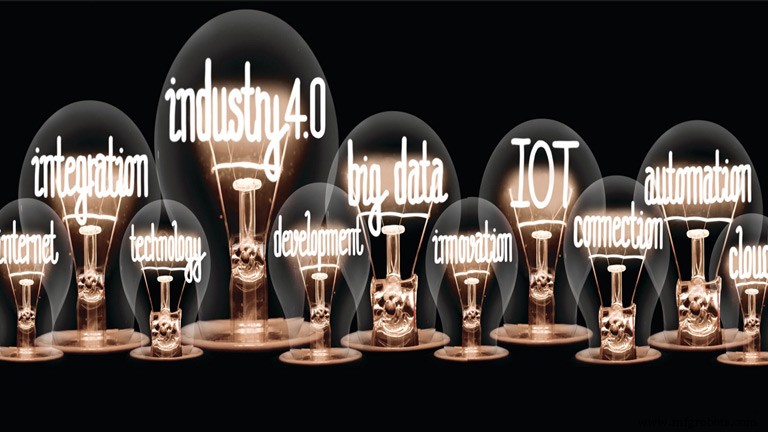
两名受访者表示,回流——将制造业带回美国——正在发生。一个是电子合同制造商 Electro Soft Inc.,其客户要求匹兹堡公司生产更多产品,另一个是 Amazon Web Services。
总经理 Douglas Bellin 表示:“制造业的近岸外包和再外包是真实存在的,公司不仅要实施‘久经考验’,还要改变他们的业务流程和技术堆栈,使其更加灵活。”智能工厂和工业 4.0,AWS。
扭转离岸外包的主要原因当然是供应链问题。而这些问题的催化剂是大流行,令人敬畏的故事不断涌现。
例如,橡树岭国家实验室碳纤维技术设施的团队想出了如何生产用于口罩的 N-95 介质,然后将该技术转让给制造柴油滤清器的工业合作伙伴。他们的合作使每天生产超过 300 万个口罩。
大流行两年多以来,各种规模的公司、初创公司、公私合作伙伴关系和大学等都继续大量生产新颖的想法和创新产品以及我们所依赖的主要产品,为下一页所展示的领导力创造机会出现。
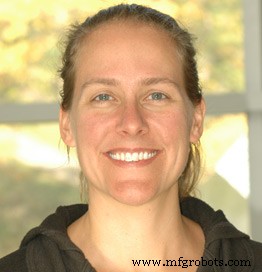
基拉·巴顿博士
密歇根大学 (UM) 副教授
大流行期间暴露的行业弱点加剧了巴顿对智能制造 (SM) 的吸引力。她说:“大流行提供了一个前所未有的例子,说明制造业需要提高敏捷性和智能决策,包括供应链。” “这激发了该领域内的更多研究计划和资助机会,以及强大的行业合作。” Barton 和她在 U-M 的团队创建了一个需求驱动的数字孪生 (DT) 框架,该框架定义了在广泛的应用程序中实现 DT 可重用性、互操作性、可互换性、可维护性、可扩展性和自主性所需的规范。 “我认为开发一个……框架,以及该框架在各种工业相关问题上的示范和实施是我们最大的成就,”她说。 “我们希望继续成为这个领域的领导者。”而SM的诱惑呢? “智能制造将机器人、人工智能和网络物理系统的概念结合在一起,以利用信息在制造业内进行更智能的决策,”巴顿说。 “这提供了一个独特的机会,可以跨多个领域来解决一个具有重要社会意义的问题。”
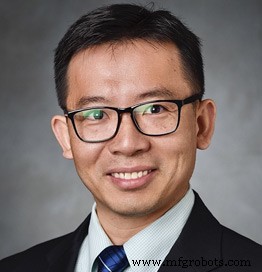
杨辉,博士
宾夕法尼亚州立大学教授
杨的研究实验室专注于设计和开发新的“传感-建模-优化”技术,以研究制造中的非线性、随机动力学以提高质量。在他们最近的工作中,Yang 和他的研究团队设计了一种新的差分隐私方法,通过添加“噪音”来阻止潜在的黑客,从而实现对敏感数据的自动保护;利用新一代物联网和分布式计算开发新的网络模型,使用随机方法进行机器信息处理和状态监测;并设计了用于增材制造质量控制的新六西格码方法。 “就像一个生态系统一样,我们让人们在增材制造的不同领域独立工作,系统工程师可以帮助连接这些点,为质量管理提供一个框架,”杨说。 “质量是必不可少的,如果我们从一开始就设计一个系统级的质量管理框架,那么我们就能以更低的成本获得更高的质量和更高的生产力。归根结底,每个人都想做高精度、高端的制造,但如果在生产过程中的任何一步质量受到影响,你就失去了全球市场所需的竞争优势。”

埃里克·M·约翰逊博士
伊顿公司增材制造研究实验室高级经理
在进入增材制造之前,Johnson 的职业生涯致力于制造如何影响材料并最终影响产品的耐用性。 “然后在 2013 年,我当时的雇主决定购买一台金属 3D 打印机,”他说。 “作为一名冶金学家,我不能放弃研究如此酷炫技术的机会。一旦我开始在该领域工作,我就对增材制造 (AM) 可以为设计、制造和供应链带来的机会大开眼界。”他加入了 AM 社区,建立了关系并了解了更多关于 3D 打印的知识。 “我非常感谢更大的增材制造社区,因为我已经开发出令人敬畏的技术和奇妙的想法,这些想法激发了像我这样的增材制造采用者,”他说。伊顿全心全意地使用增材制造技术及其团队的奉献精神,帮助约翰逊在创纪录的时间内实现了航空航天部件的增材制造生产,这也给约翰逊带来了灵感。 “我相信我们可以改变制造方式,这是我未来的目标!”他说。

道格拉斯·贝林
智能工厂和工业 4.0 总经理
亚马逊网络服务
贝林负责监督亚马逊工业网络服务的整体战略和路线图,在发现制造业趋势方面处于领先地位。他看到的一个趋势是变化的快节奏。 “我们正处于市场的关键拐点,变革的速度正在加快。”他说。 “过去,市场会在 10 到 20 年的时间范围内发生变化。现在,我们看到市场变化和改善会在五年或更短时间内发生。”此外,许多与工业 4.0 相关的技术,如远程监控和操作、自我纠正制造、人工智能。和机器学习,贝林现在认为是必备品。这位 6 Sigma 绿化带的职业生涯始于在一家钢铁厂从事所有工作,他也看到了与大流行相关的供应链扭结中的机会。 “制造业的近岸外包和再外包是真实存在的,企业不仅要实施‘久经考验’,而且要改变他们的业务流程和技术堆栈,使其更加灵活,”他说。
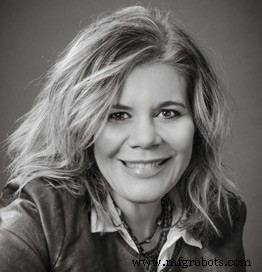
詹妮弗·提斯代尔
格林首席执行官
Tisdale 是一位网络经济战略家,以为行业、政府和学术界制定网络安全计划和战略而闻名。她公司的重点领域包括硬件和软件融合的网络物理系统的安全、网络、应用程序安全测试、培训和咨询。她的专长集中在互联的网络物理系统和技术的安全性,包括工业物联网、关键基础设施和先进的交通运输。 Tisdale 在国防、汽车、制造和科技行业拥有独特的经验。她之前是密歇根经济发展公司 (MEDC) 的网络移动项目经理。在 MEDC,Tisdale 负责通过将智能移动性和网络安全相结合来推动联网和自动驾驶汽车的发展,从而支持汽车和国防工业。 “技术为制造业带来了许多好处,但也带来了安全风险,”她说。 “我受到鼓舞来倡导和教育健全的网络安全实践对我们的制造商的重要性,以帮助保护他们的业务和产品质量。我还想确保每个制造商都明白有可用资源来改善他们的网络安全状况。”
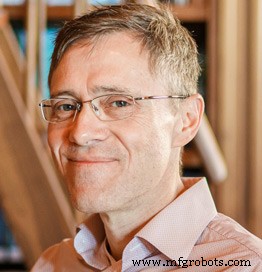
Thomas Bollenbach,博士
首席技术官,
先进再生制造研究所 (ARMI)
Bollenbach 在 BioFabUSA(ARMI 项目)的成员中发挥领导作用,将智能制造用于细胞、组织和器官制造。他们的成就包括 SMAC(可扩展、模块化、自动化和封闭)制造平台和深层组织表征中心。他们还在开发实时的、基于传感器的平台和数据分析,用于过程和最终产品的质量控制,以克服未应用智能制造原则时遇到的障碍。 “SMAC 和深度表征将使质量源于设计的制造成为可能,这对于几十年来制造组织和器官的概念在经济上变得可行至关重要,”Bollenbach 说。未来,他认为生物制造行业通过利用人工智能等工具的实时数据采集和处理来监控和控制制造的能力将会提高。 “我认为这会导致从目前在实验室中使用分析化学家的传统工具进行的质量控制实践转变为技术人员监控传感器输出,”Bollenbach 说。 “这也将导致 FDA 等监管机构审查和批准提交给他们的制造流程的方式发生变化。”

Akhila Tadinada
Xemelgo Inc. 首席技术官
没有什么比为制造商创建软件更能给 Tadinada 带来乐趣的了。 “制造商是我们经济的真正建设者,”她说。她和一位前雇主的同事于 2018 年成立了这家西雅图创业公司,提供交钥匙工业 4.0 应用程序来跟踪原材料、在制品、资产、装运和成品。 “Xemelgo 的数字助理确保制造商可以专注于完成工作,而 Xemelgo 软件在后台运行,以确保一切正常,”她说。为了获得灵感,Tadinada 将目光投向了她父亲在印度最大的发电设备制造公司之一的职业生涯,她小时候曾到过那里,还去了亚马逊。 “亚马逊 30 年前从一个销售书籍的小型网站开始,最终重新构想了零售业务的各个方面,”她说。 “我们相信制造业正在开始类似的旅程。随着我们将制造的各个方面都连接起来并且实时数据流过,制造商将能够立即构建高度定制的产品,并以前所未有的方式满足最终客户的需求。”
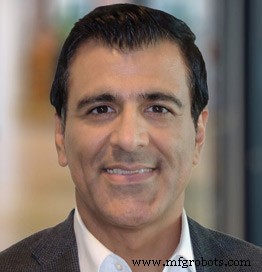
萨钦卢拉
美国咨询行业负责人,
安永先进制造和移动性
安永(前身为安永)的使命是创造一个更美好的工作世界。转型制造业是 Lulla 作为制造业咨询领导者的核心使命。 “我们最大的成就是在克利夫兰推出了我们的 EY-Nottingham Spirk 创新中心,为我们的客户展示智能制造和数字化转型的未来,”他说。 “我们的使命是与每家制造公司合作,在我们的创新中心与我们的生态系统合作伙伴一起,利用数字技术改变他们的产品、客户体验和运营弹性。”他说,安永还通过一种名为“实现转型”的方法创建了一种整体方法来改造制造公司,该方法采用以人为本的方法来应用“技术@速度”和“创新@规模”。 20 多年为汽车制造 OEM 提供咨询服务,并从小受到父亲的启发,父亲创办了一家成功的服装制造公司,显然在他的生活中发挥了关键作用。 “这是我的 DNA,”Lulla 在谈到他塑造制造业未来的旅程时说。
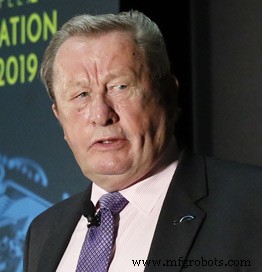
马尔科姆·J·汤普森博士
NextFlex 执行董事
美国制造研究所 NextFlex 创造了一种基于印刷电路的新型电子产品,该电子产品集成了薄而灵活的电子芯片和印刷互连件,可实现快速上市、低成本且通过环保制造工艺制造. “我们与联盟成员建立了合作伙伴关系,以协作解决问题,同时还在 NextFlex 内部建立了一个工程和制造组织,”Thompson 说。 “这两项成就推动了 FHE(柔性混合电子)功能水平和成熟度的显着提高。”随着研究所致力于推动混合增材电子产品的广泛采用、商业化和应用,汤普森希望欢迎更多的 NextFlex 成员(目前超过 100 名)覆盖更广泛的供应链范围并扩大其制造合作伙伴的数量。 NextFlex 工作的关键是其对智能制造的使用。 “我们已经实施了多种印刷/增材工艺方法,以降低制造成本和复杂性,”他说。 “在电子组装方面,我们利用低温、非焊料倒装芯片贴片来兼容低温材料。”
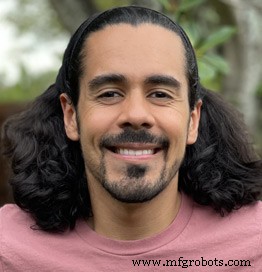
杰·弗洛雷斯
Invent the Change LLC 创始人
弗洛雷斯将他的技术知识与娱乐相结合,对孩子们进行 STEM 外展。他拥有机械工程学位,并且是罗克韦尔自动化的前全球 STEM 大使。他还与 FIRST 合作过。 Flores 的创业项目包括创立 Invent the Change LLC,这是一个 STEM 促进组织。在大流行期间,大多数活动和学校都关闭了,他在自己的 YouTube 频道上制作了一个节目,“这不是魔术,而是科学。”该节目使用魔术的娱乐方面,以及伪装成魔术的科学实验,以提高对 STEM 的认识和兴奋。 “每个实验都既有趣又具有教育意义,并且对所有年龄段的人都很有趣,”他说。作为探索教育神秘科学团队的神秘科学指南,弗洛雷斯通过回答学生提交的问题来培养好奇心,例如“乐高积木是如何发明的?”以及“为什么人们在倒立时不会从过山车上掉下来?” Jay is also the host of the innovation competition television show “Make48,” which is filmed for PBS and reaches 96 percent of U.S. households.
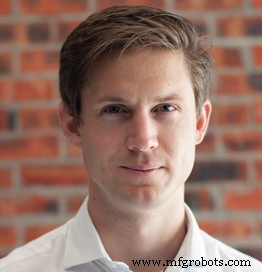
Frans Cronje
Co-founder and CEO, DataProphet (Pty.) Ltd.
When Cronje thinks of the future of smart manufacturing, he sees a pan-operational, self-optimizing ecosystem powered by A.I. but with people at the center. In the plant of the future, humans are empowered to improve their digital skills continuously. This will be necessary as they interface with increasingly smart machines that make new products and components with increasingly advanced materials. “Future manufacturing will also capture value with different metrics such as social and environmental benefit, cross-disciplinary collaboration and scalability of digital capabilities,” he said. Cronje established DataProphet in 2014 when he turned a consultancy into a company. Since then, he and his team of data engineers and data scientists have consistently helped customers reduce manufacturing defects by an average of 40 percent. Some of those customers have even, through DataProphet’s PRESCRIBE solution, achieved zero defects. Cronje’s efforts led to an invitation to join the World Economic Forum’s Global Innovators Community, made up of the world’s most promising startups, and a request to speak at the Annual Meeting of the New Champions, aka the “Summer Davos.”
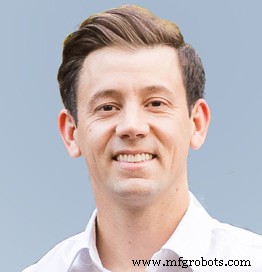
Daniel Burseth
Vice President of Engineering, Eckhart
Eckhart combined a collaborative robot, machine vision and an autonomous mobile robot to make a fully automated, end-of-line inspection system. The system can identify incorrectly placed product decals, bad electrical connections and missing components for a commercial vehicle OEM. “Historically, manufacturers staff many people in inspection roles in which they are armed with a checklist on a clipboard and some basic training,” he said. “Humans are not great at repetitive inspection tasks and quality judgements vary significantly from one operator to the next. Despite best efforts to review quality, many companies end up shipping bad product out the door.” Automation inspection is in high demand as products increase in complexity and skilled labor becomes increasingly scarce. In addition to inspection and testing automation, Eckhart continues to see double digit growth in more traditional factory automation areas including sanding and grinding, machine tending, and the lifting and transport of heavy loads. “Automation is fundamentally about alleviating people from the most dull, dirty and dangerous activities in the factory,” said Burseth. “We take pride in the opportunity to make U.S. factories more desirable places to work.”
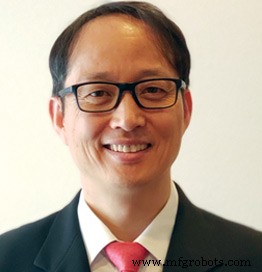
Martin Jun, Ph.D.
Associate Professor, Purdue University; CEO &Co-Founder, Maijker Corp.
Jun co-founded (with fellow honoree Chandra Nath, Ph.D.) Maijker Corp. to commercialize a sound sensor Jun developed to help understand a machine tool’s operation status, condition, process anomalies, health and more, much like the legendary factory worker who could tell by the way a machine sounds if it’s working correctly. He likens the contact-based, internal sensor to a stethoscope to detect each machine’s unique sequence of sounds that can be considered as speech and interpreted. Jun has also developed an immersive and interactive cyber-physical system (I2CPS) framework, which is based on the similarities of smart manufacturing architectures while emphasizing collaboration between humans and autonomy. In general, the autonomy modules are in cyberspace, and humans utilize them from applications. “Especially in the I2CPS framework, human cognition can be substituted for artificial intelligence,” Jun said. “The autonomy can control manufacturing systems instead of humans, and both humans and autonomy share the work of data analysis and association.” Through the work in his lab, Jun hopes to help small and medium-size manufacturers survive and thrive, goals made even harder to achieve during the pandemic, he said.
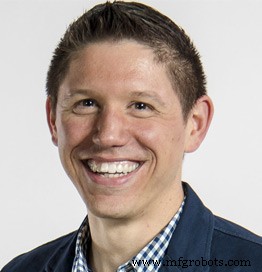
Thomas Hedberg Jr., Ph.D.
Mission Director, Acquisition and Industrial Security, Applied Research Laboratory for Intelligence and Security, University of Maryland
After 15 years working to develop standards and digital capabilities for model-based enterprise (MBE), digital thread and digital twin, Hedberg was recruited to build and lead a research team at the University of Maryland to study how to scale smart-manufacturing capabilities to entire supply chains. “We tell a joke that we started working on supply chain resiliency in early March 2020 when you could count on one hand the number of researchers focused on the topic,” he said. “Then fast forward to mid-March 2020 and the entire world was focused on supply chains.” Prior to the university, Hedberg worked at NIST, where he co-developed the NIST Smart Manufacturing Systems Test Bed that’s used by leading software companies to develop and test their products. The project earned him and his team a U.S. Department of Commerce Gold Medal, the highest honor given by the Secretary of Commerce for “distinguished and exceptional performance,” according to a government website. Hedberg was also instrumental in the creation of the American Society of Mechanical Engineers’ MBE Framework, whose first standard was published in March 2022.
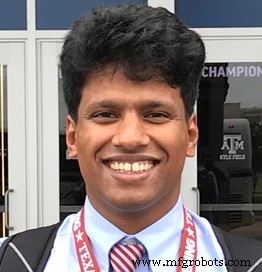
Chandra Nath, Ph.D.
Chief Technology Officer &Co-Founder, Maijker Corp.
When he worked at Hitachi America Ltd., Nath invented a novel signal acquisition method for online monitoring of manufacturing processes and tool condition. A patent has been published. More recently, with fellow honoree Martin Jun, Ph.D., and John J. Murphy, Nath started Maijker Corp. to commercialize an A.I.-based, non-invasive, simple and flexible plug-and-play machine monitoring system that uses a sound sensor that originated in Jun’s lab. Maijker received awards, with Nath as the principal investigator, from the National Science Foundation Seed Fund and Elevate Ventures Inc., Indianapolis, to continue the R&D and commercialization work for the system. Maijker began just as the pandemic started. Despite some COVID-induced initial delays in scheduling industry testing and adoption, the co-founders have been fortunate to sell a software product and already have the initial version of their machine monitoring system in use within their partners’ factories. One of the partners was so successful using the system he wants to deploy it more widely in his factory and offered to compensate the company, a phenomenon Nath deemed “a huge success.”
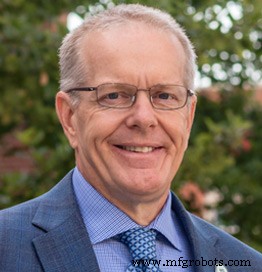
Craig Blue, Ph.D.
Director, Advanced Manufacturing Program, Oak Ridge National Laboratory
During a 25-year career in materials and manufacturing technologies R&D, Blue has amassed patents, publications and awards. But one of his proudest moments was seeing ORNL’s experts in manufacturing and materials, coupled with its facilities and capabilities, help out in the pandemic. He and his team transformed the Carbon Fiber Technology Facility at ORNL to produce N-95 media for face masks, and then transferred that technology to an industrial partner that makes diesel filters to enable the supply chain and production of over 3 million masks a day. They also used the digital thread—a technology Blue’s passionate about—to rapidly produce tooling for face masks and test tubes. In fact, ORNL’s Manufacturing Demonstration Facility, of which Blue was founding director, drove the creation and adoption of the digital framework and data analytics for manufacturing processes. “The digital thread is key to implementing advanced manufacturing and taking American manufacturing to the next level,” he said. “The technology enables companies to fully understand and control their transient manufacturing processes—to ensure part properties and reproduce identical parts time and again.”
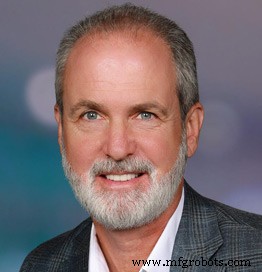
Matthew Cordner
Principal A&D Business Architect, HCL Technologies Inc.
After spending three decades designing, building and supporting vertical-lift aircraft, Cordner is applying his lessons learned to IT. “An aircraft is a complex system of carefully integrated systems, with trade-offs made in each to achieve the desired performance,” he said. “IT architecture is also a ‘system of systems’ designed for higher objectives.” Among the most critical objective is agility—the ability to rapidly sense and respond to daily changes in engineering, the factory and the supply chain, he said. “Billions have been invested in IT tools, yet few companies have integrated them with this overall objective in mind,” said Cordner. “This requires that PLM and ERP systems more effectively integrate to each other and the shop floor. At HCL, we call this Model Based Enterprise 2.0. We see renewed focus on ERP’s role in ensuring supply chain agility and resiliency. Modern ERPs such as SAP’s S/4HANA have been designed to be faster, less complex, more user friendly while providing far more capability than legacy tools.” He offers a gentle reminder:“Remember, the ultimate goal is to optimize your enterprise, not your applications.”
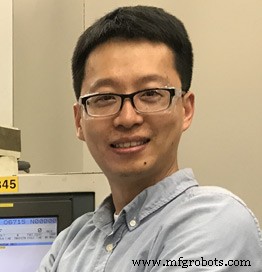
Yujie Chen, Ph.D.
Engineer, Digital Manufacturing and Machining,
Caterpillar Inc.
Chen started his career in manufacturing with Caterpillar in 2013, and has been working in advanced manufacturing-related areas ever since. His work involves developing and implementing manufacturing process modeling, and data exchange and analysis between manufacturing processes. “This is intended to automate the manufacturing process to ensure agility and resiliency,” he said. “For example, a robot can assist in scanning incoming material for variations, and then our advanced manufacturing systems can adjust to these variations more intelligently.” Through MxD, the digital manufacturing institute within Manufacturing USA, he led a team of more than 20 people from academia and industry in a funded project, according to a 2019 article in Peoria Magazine when it named him among 40 Leaders Under 40. COVID-19 illuminated the importance of smart manufacturing, he said. “With smart manufacturing, the manufacturing process status can be monitored, product quality can be predicted and design can be virtually validated,” said Chen. “Some people may be physically far away from manufacturing lines, but they can have even better insight and control of manufacturing with smart manufacturing technologies.”
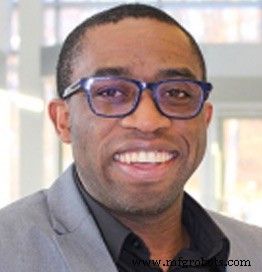
Chinedum “Chi” Okwudire, Ph.D.
Founder and CTO, Ulendo; Associate Professor, Mechanical Engineering, University of Michigan
Okwudire and his colleagues have created new algorithms that leverage control theory, advanced modeling and sensing, and machine learning to boost the speed and precision of desktop and industrial-grade 3D printers at low cost. Manufacturers requested their FBS vibration compensation algorithm to help them speed up their 3D printers to meet the spike in demand brought about by the SARS-CoV-2 pandemic, but it wasn’t ready for commercial distribution at that time. “We were really inspired by the requests,” he said. In the meantime, the team is deploying their solutions on commercial printers. “It’s great to see our solutions leave the research lab and find success in the field,” said Okwudire. “We have lots more smart manufacturing solutions in development—like our SmartScan algorithm for laser-based 3D printing of metals—that we are excited to bring to the 3D printing industry and beyond.” His company’s name, Ulendo, means “journey” or “voyage” in the Chichewa language. The company’s team is on a journey “to use software to enable manufacturing machines to achieve their full potential as ubiquitous tools for modern manufacturing,” according to the company website.
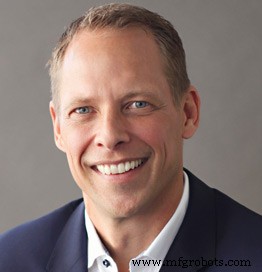
Johan Bjorklund
CEO, Betacom
When Bjorklund became CEO at Betacom in 2019, his vision was for the future. Could Betacom’s wireless infrastructure for mobile operators be at the crossroads of Industry 4.0? He convened wireless industry leaders in finance, engineering, security, product management, sales and marketing to start a new business unit and a new Betacom service—Betacom 5G as a Service (5GaaS)—what the company calls the industry’s first fully managed private wireless service. “We developed a turnkey service, backed by a modern network operations center that manages security in addition to network operations,” he said. Prior to joining the team that acquired Betacom, Bjorklund co-founded and is chairman of the board of a passion project, software company Aiberry. Its software uses A.I. to analyze a person’s words, voice and facial expressions during a short, guided conversation to deliver critical insights to medical providers to help them diagnose and treat mental health disorders. “In a time where mental well-being is more important than ever, Aiberry is increasing access to care, enhancing early detection and enabling healthcare providers,” he said.
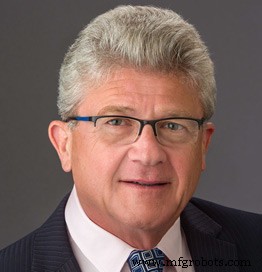
Sam Golan
Founder &CEO, High QA Inc.
In his 25 years of hands-on management experience in CAD/CAM and PLM, it became clear to Golan that smart manufacturing is relatively in a good place and moving in the right direction to address Industry 4.0 challenges. “What is dramatically behind, however, is the quality for manufacturing,” he said. In Golan’s view, quality for manufacturing is decades behind and is a huge bottleneck associated with high cost. Manufacturing automation is highly advanced compared to quality for manufacturing, with the gap growing daily, he said. “Quality can’t keep up with the pace,” said Golan. “Parts are getting smaller, (are) highly accurate with tighter tolerances and are accompanied by huge documentation submissions.” Golan built High QA’s solution by integrating quality and manufacturing from the beginning—2D drawing or 3D model. It has been adopted by close to 1,000 customers, ranging from OEMs to all supply chain levels. Golan’s not stopping there. “Our next achievement begins with a new product launch that enables the supply chain to become an integral part of the manufacturing quality process,” he said.
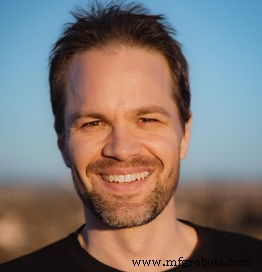
Paul Van Metre
Co-Founder &CRO, ProShop ERP
Van Metre and his partners created ProShop ERP, a paperless, digital manufacturing ecosystem, so they could run their former CNC machine shop using smart tools and processes. When other companies “were very interested” in what they had built, the partners sold the shop they had run for 17 years so they could focus their efforts on the software. “Our team at ProShop has helped bring life-changing impact to hundreds of manufacturing companies, helping clients significantly scale much faster than they could otherwise, reduce costs, increase throughput, improve their bottom lines, create more jobs and improve their communities,” he said. “We believe this is very important work to support this industry and the overall economy.” Industry apparently likes what Van Metre, Matthew Carrico and Kelsey Heikoop created. “The pandemic has led to tremendous growth at ProShop, and we’ve more than doubled our team and client base,” Van Metre said. “Most manufacturing companies have realized they must adopt smart tools to help run their businesses, and that paper documents and legacy software systems won’t allow them to compete at the level needed today.”
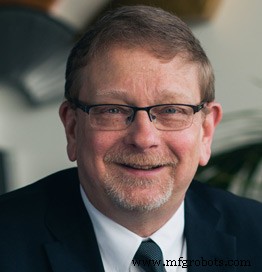
Karla Trotman
President &CEO, Electro Soft Inc.
When the pandemic interrupted industry supply chains, domestic manufacturers moved to strengthen the pipelines by reversing offshoring. “Companies are now realizing that a global supply chain only works if all elements are perfect,” said Trotman. “But what happens when conditions are not perfect? Revenue suffers. Companies are not willing to take that risk, so reshoring is happening at a larger scale and our customers are now asking us to take on larger volumes of work.” There’s a glitch, though, with a shortage of qualified workers. Trotman and other manufacturers in her region of Pennsylvania found their own solution to the issue by banding together 15 years ago and creating the Southeastern Pennsylvania Manufacturing Alliance (SEPMA). Trotman is co-chair. The SEPMA established a boot camp and career pathway to prepare entry-level workers “who at least have a foundation in manufacturing when they walk in the door” for its employer partners. Hundreds of boot camp graduates have been hired. Since starting in 2007, SEPMA has provided technical training to thousands of people and exposed hundreds of middle and high schoolers to manufacturing careers.

David Vasko
Senior Director, Advanced Technology, Rockwell Automation
You might want to call Vasko a pioneer in autonomous control. “Decades ago, I was able to demonstrate autonomous control by applying physical simulation in conjunction with A.I. to create a living replica of a factory, what today is commonly called a digital twin,” he said about one of three critical developments in smart manufacturing to which he contributed.另外两个? He was one of the architects who innovated the transition from PLCs to general purpose automation controllers leveraging industrial networks; and he was an architect for functional safety, which enabled the use of easier-to-apply safety controllers and networks to replace difficult-to-use relays. Vasko, who holds more than 75 patents for smart manufacturing innovations, says, “We see the dream we had 20 years ago—to create intelligent, interconnected manufacturing—coming to life each day. I only see this expanding in the future with enhanced supply chain flexibility and resiliency, increased availability of experts as extended reality and A.I./machine learning become easier to use and explain, and a safer, more skilled workforce that leverages the technology to produce in a more efficient, greener way.”
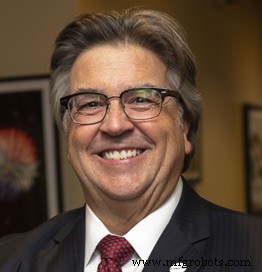
Howard D. Grimes, Ph.D.
CEO, Cybersecurity Manufacturing Innovation Institute (CyManII)
Grimes is helping secure manufacturing operations and supply chain networks, the biggest, most complex targets for cybercriminals. Established in 2020 by The University of Texas at San Antonio, where Grimes is also the associate vice president for institutional initiatives, CyManII has developed early instantiations of a smart manufacturing architecture (SMA) that overlays onto both smart and legacy systems. CyManII has also started to successfully demonstrate how this architecture improves productivity and shrinks the cyber attack surface area. It has also introduced a novel modeling and simulation approach called “CEEQ,” or Cybersecurity Energy Emissions Quantification. “CEEQ allows us to validate and verify the energy efficiency gains and reductions in emissions, and quantitate the extent of cyber hardening achieved via SMA,” he said. As CyManII cyber secures domestic manufacturing Grimes sees, “a smart manufacturing environment that is not subject to theft of IP, where supply chains are resilient and secure and manufacturing sectors become significantly less vulnerable to advanced persistent threats and acts of sabotage by our adversaries. All of this leads to the U.S. being globally competitive.”
自动化控制系统


